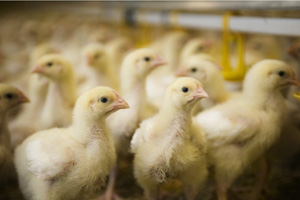Rise in antimicrobial use in Danish poultry production

Antimicrobial usage in animals in Denmark continued to increase in 2013 – mainly due to an increased use in pigs but also due to an increased in use in poultry production.
In 2013, the total use of antimicrobials in livestock and pets in Denmark was 4% higher than the previous year when measured in kilograms according findings in the annual DANMAP report from Statens Serum Institut and the National Food Institute, Technical University of Denmark. DANMAP is the Danish integrated antimicrobial resistance monitoring and research programme.
The increased consumption is mainly attributed to a 6% increase in the consumption of antimicrobials in pig production, which accounts for about 84% of meat production in Denmark. But the consumption in poultry and pets has also increased. Distributed by species , pigs account for around 78% of antimicrobial use in 2013, cattle 10%, aquaculture 3%, poultry 1%, fur animals 4%, and pets, horses and other companion animals the remaining 3%.
Increased use in pigs and poultry
In 2013, antimicrobial consumption in poultry increased by 57% compared to the year before. This is partly because of the wet winter, which led to more illness and – as a result – an increased consumption of tetracyclines in turkeys. An increased occurrence of diarrhea in broilers in 2013 can partly explain the increased consumption of penicillins, which are an effective treatment against diarrhea. “Anti-microbial consumption in poultry is generally low compared to other species. It accounts for only 1% of the total use. For this reason, a few outbreaks of illness can cause significant fluctuations in the annual consumption data,” senior researcher Yvonne Agersø from the National Food Institute explains.
Antimicrobial consumption in pigs measured in doses has increased in all three age groups: sows/piglets (9%), weaners (5%) and finishers (5%). This is primarily due to an increased consumption of pleuromutilins and tetracyclines, which are used for group medication . However, the consumption in pigs is still 12% lower than in 2009, when the highest consumption was recorded since Danish farmers stopped using antimicrobial growth promoters. “It is crucial that we reverse the increase in consumption, if we are to tackle the problem of antimicrobial resistant bacteria,” Agersø says.
Source: DANMAP
Join 31,000+ subscribers
Subscribe to our newsletter to stay updated about all the need-to-know content in the poultry sector, three times a week. Beheer
Beheer








 WP Admin
WP Admin  Bewerk bericht
Bewerk bericht